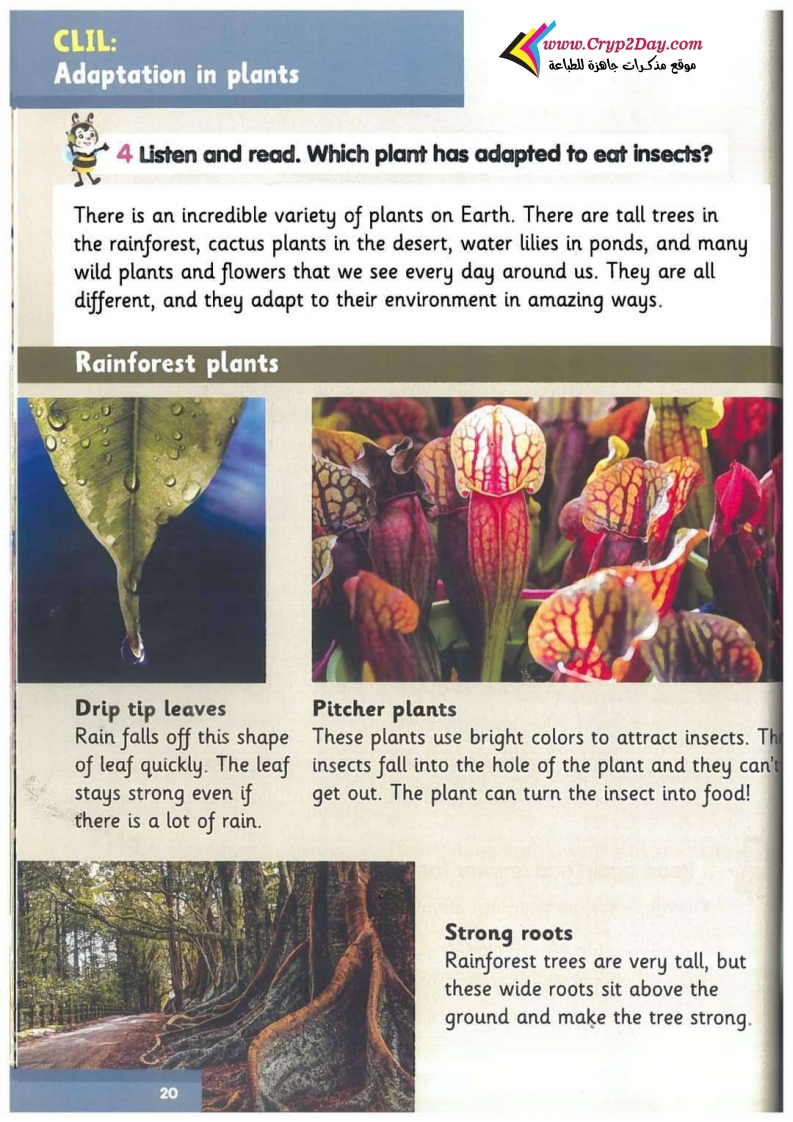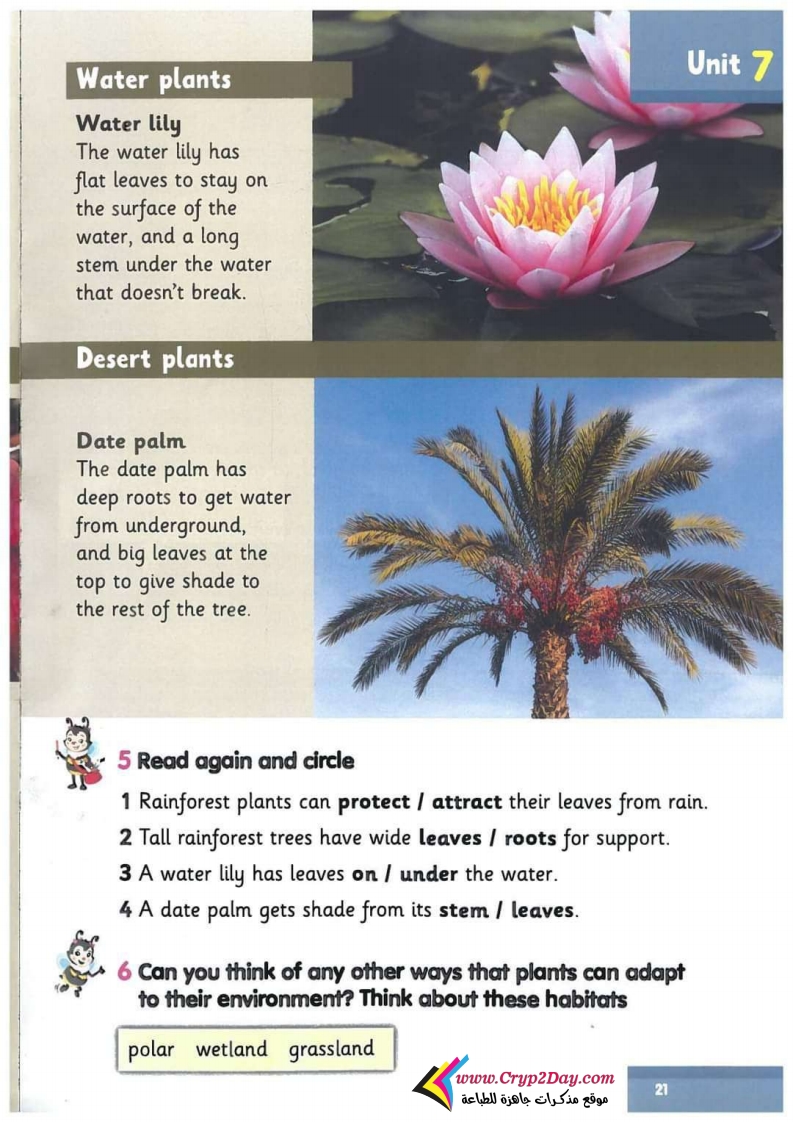Adaptotion in plants - Connect Plus Primary 3 Term 2 - ثالث ابتدائي
Unit 7: Where are the family
Unit 8: At the museum
Unit 9: At the hospital
Unit10: we love adventure
Unit11: Keep in touch
Unit 12: Community connections
CLIL: Adaptation in plants www.Cryp2Day.com موقع مذكرات جاهزة للطباعة 4 Listen and read. Which plant has adapted to eat insects? There is an incredible variety of plants on Earth. There are tall trees in the rainforest, cactus plants in the desert, water lilies in ponds, and many wild plants and flowers that we see every day around us. They are all different, and they adapt to their environment in amazing ways. Rainforest plants Drip tip leaves Rain falls off this shape of leaf quickly. The leaf stays strong even if there is a lot of rain. Pitcher plants These plants use bright colors to attract insects. The insects fall into the hole of the plant and they can't get out. The plant can turn the insect into food! 20 Strong roots Rainforest trees are very tall, but these wide roots sit above the ground and make the tree strong.

Water plants Water lily The water lily has flat leaves to stay on the surface of the water, and a long stem under the water that doesn't break. Desert plants Date palm The date palm has deep roots to get water from underground, and big leaves at the top to give shade to the rest of the tree. Unit 7 5 Read again and circle 1 Rainforest plants can protect / attract their leaves from rain. 2 Tall rainforest trees have wide leaves / roots for support. 3 A water lily has leaves on / under the water. 4 A date palm gets shade from its stem / leaves. 6 Can you think of any other ways that plants can adapt to their environment? Think about these habitats polar wetland grassland www.Cryp2Day.com موقع مذكرات جاهزة للطباعة 21

Can you think of any other ways that plants can adapt to their environment . think about these habitats











